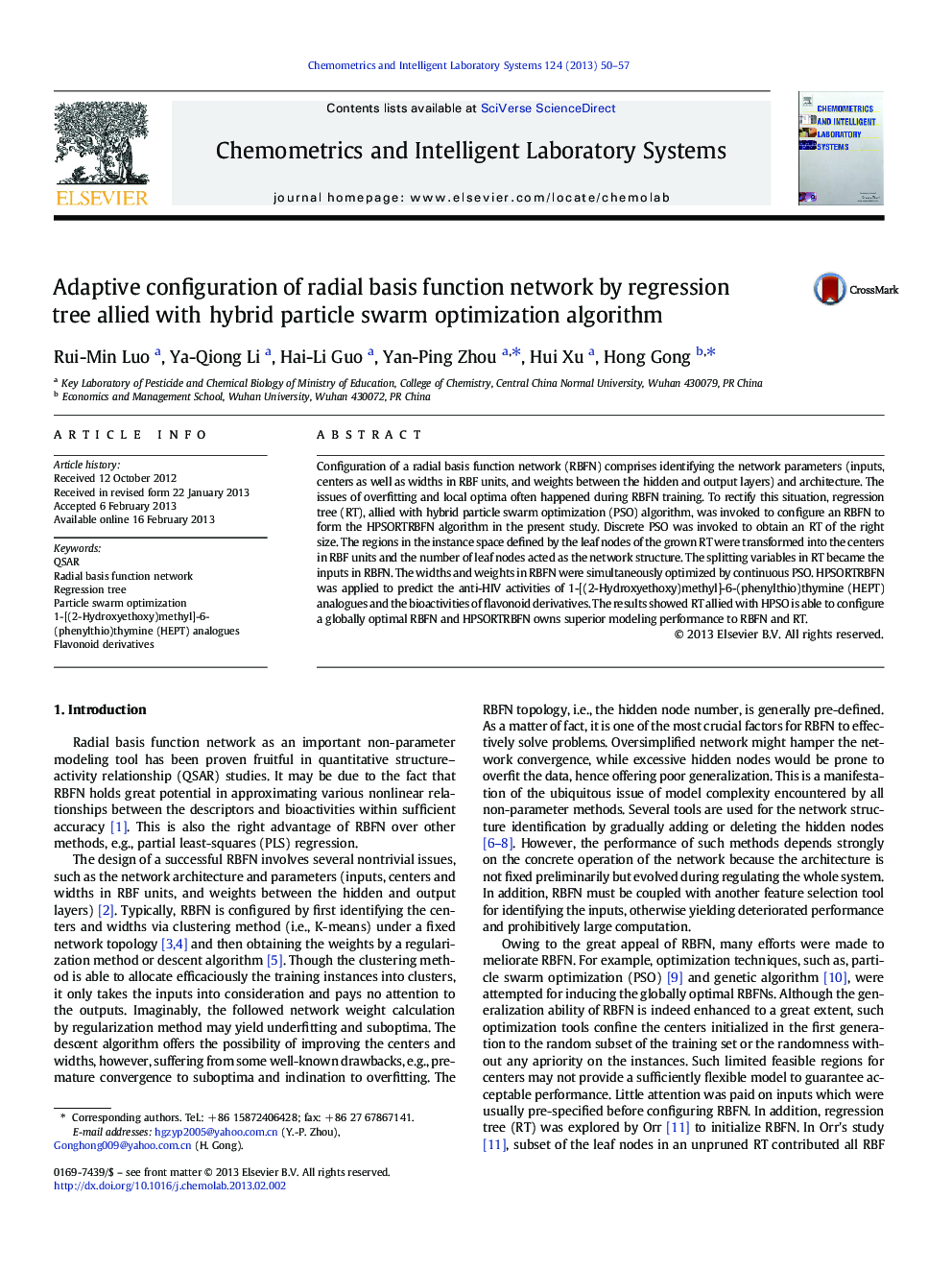| Article ID | Journal | Published Year | Pages | File Type |
|---|---|---|---|---|
| 1179883 | Chemometrics and Intelligent Laboratory Systems | 2013 | 8 Pages |
Configuration of a radial basis function network (RBFN) comprises identifying the network parameters (inputs, centers as well as widths in RBF units, and weights between the hidden and output layers) and architecture. The issues of overfitting and local optima often happened during RBFN training. To rectify this situation, regression tree (RT), allied with hybrid particle swarm optimization (PSO) algorithm, was invoked to configure an RBFN to form the HPSORTRBFN algorithm in the present study. Discrete PSO was invoked to obtain an RT of the right size. The regions in the instance space defined by the leaf nodes of the grown RT were transformed into the centers in RBF units and the number of leaf nodes acted as the network structure. The splitting variables in RT became the inputs in RBFN. The widths and weights in RBFN were simultaneously optimized by continuous PSO. HPSORTRBFN was applied to predict the anti-HIV activities of 1-[(2-Hydroxyethoxy)methyl]-6-(phenylthio)thymine (HEPT) analogues and the bioactivities of flavonoid derivatives. The results showed RT allied with HPSO is able to configure a globally optimal RBFN and HPSORTRBFN owns superior modeling performance to RBFN and RT.
► RT allied with hybrid PSO was used to configure an optimal RBFN forming HPSORTRBFN. ► Two QSAR data sets were used to evaluate the performance of HPSORTRBFN. ► Results revealed that HPSORTRBFN yielded superior generalization ability to RBFN. ► By HPSORTRBFN, the RMSEP of bioactivities of HEPT analogues was 0.7438. ► A RMSEP of 0.3492 by HPSORTRBFN was obtained for flavonoid derivatives.
